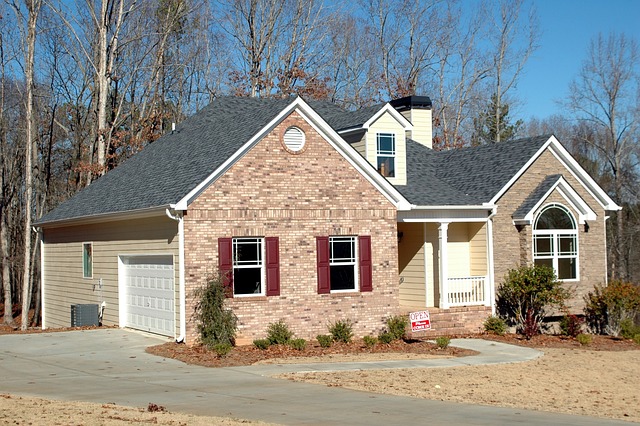In the competitive real estate landscape, selling a small house can pose its unique challenges. However, with the right approach, these compact spaces can be transformed into irresistible, cozy havens that catch the buyer’s eye. This comprehensive guide outlines eleven strategic and creative tips that can help stage your small house effectively, maximizing appeal and potential selling price. From smart decluttering to strategic color use, thoughtful furniture arrangement, and professional photography, these tips will show you how to make your small house stand out in the property market.
Table of Contents
1. Declutter and Simplify
Clutter can make even a large room feel small and chaotic. In a small house, this effect is magnified. Begin by sorting through each room, removing non-essential items and personal keepsakes that might hinder potential buyers from visualizing the space as their own. Removing excess furniture can also enhance the sense of space. While doing this, keep the adage “less is more” in mind. Pare down your belongings to the bare minimum and adopt a minimalist approach, focusing on quality rather than quantity.
2. Optimize Storage
With limited space, efficient storage solutions are key. Show potential buyers that even a small home can meet their storage needs. Empty your closets and cabinets by half, then neatly organize what’s left to showcase ample storage. Show the effectiveness of storage solutions by using organizers, shelves, and drawers to their maximum potential. Don’t overlook any part of your house. If there are stairs, consider using the under-stair space for storage.
Also read: THINGS LANDLORDS LOOK FOR IN A TENANT
3. Use Light and Mirrors Strategically
Lighting is crucial in creating a sense of space. Let natural light flood in by keeping windows clean and curtains drawn back. Replace heavy, light-blocking curtains with sheer ones that allow light to filter through. Additionally, artificial lighting should be bright yet warm, creating an inviting atmosphere.
Mirrors, strategically placed, can bounce light around the room, giving an illusion of depth. Consider using large mirrors in living spaces, and position them opposite windows to reflect the outdoors, making the room feel more open and airy.
4. Choose the Right Colors
Light and neutral colors reflect light, creating a feeling of spaciousness. Using a monochromatic color scheme throughout the house can create a smooth visual flow, enhancing the sense of space. But remember, a neutral color scheme doesn’t mean dull or boring. You can add pops of colors through accent pieces, like cushions, vases, or artwork, to inject personality and warmth into the space.
Also read: PROS AND CONS OF SELLING HOME TO REAL ESTATE INVESTOR
5. Opt for an Appropriate Furniture Scale
The size and placement of furniture can dramatically affect how spacious a room feels. Choose furniture pieces that are proportional to the room’s size. Large, bulky items can overwhelm a small space. Consider furniture with exposed legs which creates a sense of lightness. Multi-functional furniture is also beneficial. For instance, a bed with storage drawers underneath or a coffee table with shelves can add functionality without taking up additional space.
6. Create Focal Points
Draw buyers’ attention away from the size of the space and towards its features. If you have an original fireplace, emphasize it with elegant mantel decor. A window with a view can be highlighted with stylish window treatments. A piece of artwork or a gallery wall can also serve as a focal point, giving the room character and depth.
7. Maintain Outdoor Spaces
Maximize your small outdoor spaces. A well-maintained garden, no matter how small, adds value to your property. Use outdoor furniture to create a cozy seating area. Potted plants can add color and life to your patio or balcony. Even the entrance of your house matters. A fresh coat of paint on the front door and a welcoming doormat can make a great first impression.
Also read: PROS AND CONS OF BUYING A HOUSE WITHOUT A REALTOR
8. Leverage Professional Photography
Professionals have the skills and equipment to capture the charm of your small house, making it appealing to a wide range of potential buyers. They know how to use lighting and angles to make spaces appear larger and more inviting. They can also create a virtual tour of your house, giving potential buyers an immersive experience.
9. Update Kitchen and Bathroom
In any house, big or small, the kitchen and bathroom hold significant weight. Make sure these spaces are clean, updated, and uncluttered. You don’t need to do a full renovation; sometimes, a fresh coat of paint on cabinets, updated hardware, or modern lighting fixtures can make a significant difference.
10. Create a Sense of Flow
Arrange your furniture in a way that allows easy movement. Ensure that doors can swing open freely, and walking paths are clear. This applies to both indoor and outdoor spaces. A good flow helps potential buyers navigate through the house effortlessly and makes the space feel larger.
11. Depersonalize the Space
While it’s important to create a warm and inviting atmosphere, it’s equally crucial to allow buyers to envision themselves in the house. Remove personal items like family photos, pet supplies, and religious or political items. Make the decor as neutral and as universally appealing as possible.
Also read: HOME RENOVATIONS THAT CAN LOWER YOUR HOUSE VALUE
Staging a small house to sell requires a careful balance of decluttering, optimizing storage, lighting, choosing the right color palette, using appropriately scaled furniture, creating appealing focal points, maintaining outdoor spaces, professional photography, updating key areas, creating a sense of flow, and depersonalizing the space. Follow these tips and watch your small house become a sought-after property in the real estate market.
Conclusion
Staging a small house to sell is an art that requires strategy, creativity, and an understanding of the potential buyer’s mindset. By following the eleven detailed tips provided in this guide, you can successfully present your small house as a functional, stylish, and inviting space. Remember, the key is not merely to make the house appear larger but to showcase its potential and uniqueness, allowing potential buyers to envision it as their future home. With careful staging, your small house can command a competitive edge in the property market, potentially fetching a better selling price.

